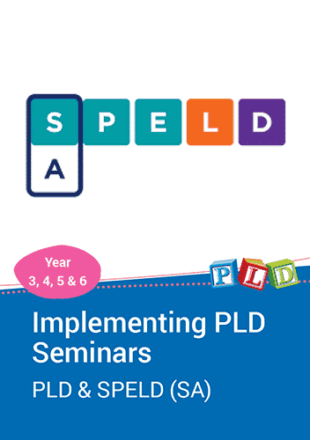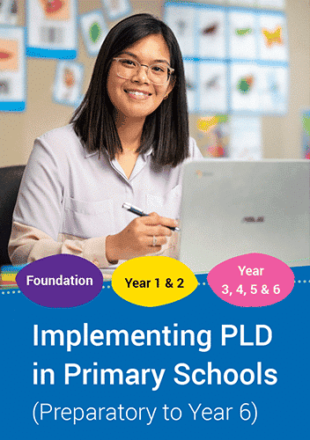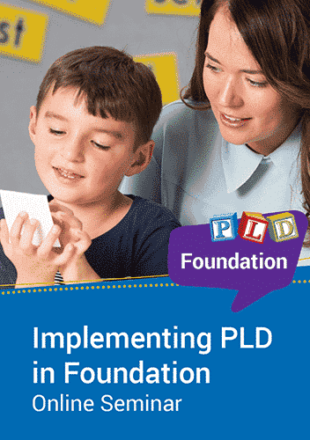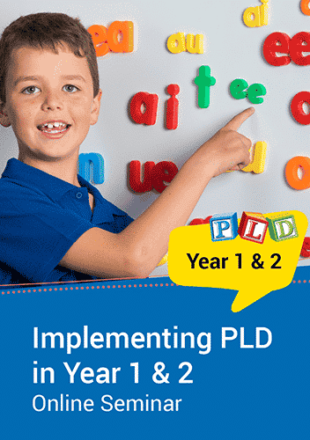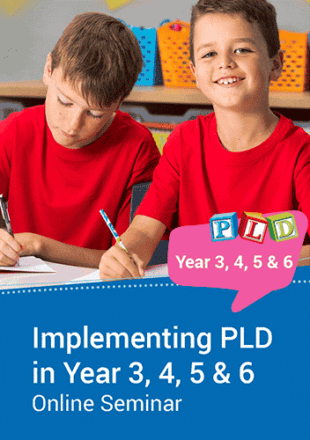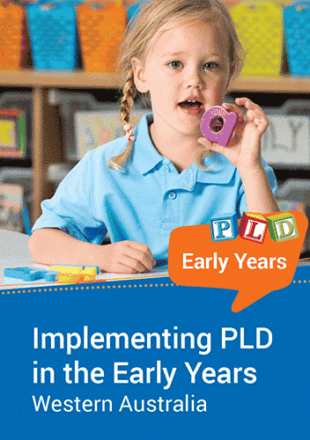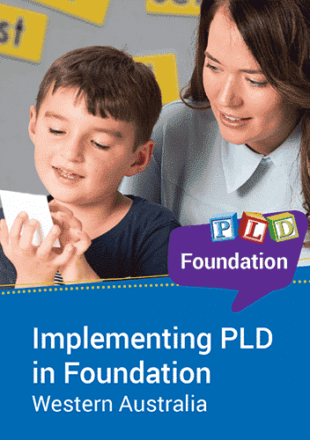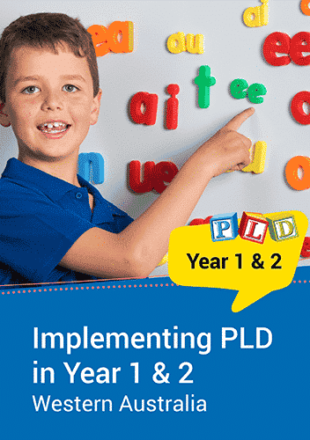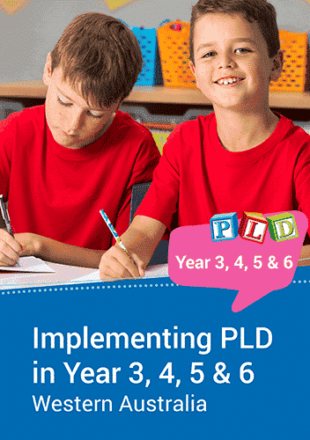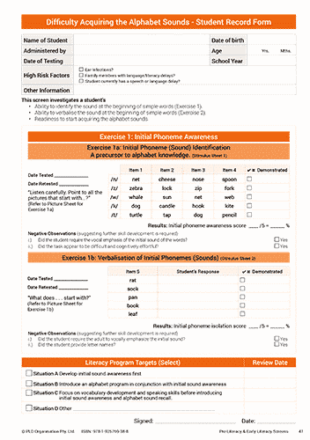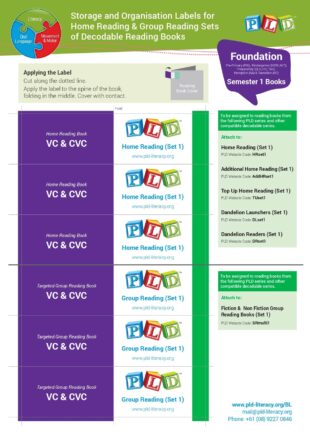Age
Showing 257–272 of 459 results
-
PLD Seminars Available Through SPELD SA: Year 3, 4, 5 & 6
Implementing PLD in the Middle and Upper Primary (Year 3, 4, 5 & 6) This full-day online seminar provides educators working within the Year 3, 4, 5 & 6 with the knowledge and tools required to explicitly target the range in literacy ability evident within middle and upper primary classes in a systematic fashion. Despite […]
Implementing PLD in the Middle and Upper Primary (Year 3, 4, 5 & 6) This full-day online seminar provides educators working within the Year 3,
-
PLD Seminars Available Through SPELD SA: Reception, Year 1 & Year 2
Implementing PLD in the Junior Primary (Reception, Year 1 & Year 2) This full-day online seminar provides educators working within Reception, Year 1 & 2 with the knowledge and tools required to explicitly target pre-literacy and early literacy in a systematic fashion. This seminar explains the implementation of PLD’s structured synthetic phonics programs (SSP) within […]
Implementing PLD in the Junior Primary (Reception, Year 1 & Year 2) This full-day online seminar provides educators working within Reception, Year 1 & 2
-
Implementing PLD in Primary Schools (Preparatory to Year 6)
With the growing focus on measurable progress, it is becoming even more important to have real, useful data to see how classrooms in your school are tracking. But how is it possible to actually get meaningful data regarding how students are performing in your school?
PLD provides an Australian, evidence-based approach to Structured Synthetic Phonics (SSP) for primary school educators. Aligned with the Science of Reading, PLD’s SSP approach extends
-
Online Seminar: Implementing PLD in Foundation Seminar
The PRE-PRIMARY school year is an important and complicated year level to teach. Educators require evidence-based knowledge on the targeted teaching of pre-literacy and early literacy development.
What to teach? When to screen? How to cater for the range in ability? This full-day online seminar provides educators working within the Foundation year
-
Online Seminar: Implementing PLD in Year 1 & 2 Seminar
Researchers consistently report that the returns are greatest when students are first learning to read, spell and write. Year 1 and 2 is critical for long-term literacy success.
What to teach? When to screen? How to cater for the range in ability? This full-day online seminar provides educators working within the Year 1
-
Online Seminar: Implementing PLD in Year 3, 4, 5 & 6 Seminar
By middle and upper primary, students typically present with a diverse range in ability.
What to teach? When to screen? How to cater for the range in ability? This one-day Literacy and Learning, seminar designed for Years 3, 4,
-
Implementing PLD in the Early Years Seminars
The PRE-KINDY AND KINDERGARTEN YEARS is a period of huge potential learning. These years are optimised when an ‘early childhood’ approach is balanced with explicit instruction.
What to teach? When to screen? How to cater for the range in ability? This one day Literacy and Learning seminar for the Early Years
-
Implementing PLD in Foundation Seminars
The PRE-PRIMARY school year is an important and complicated year level to teach. Educators require evidence-based knowledge on the targeted teaching of pre-literacy and early literacy development.
What to teach? When to screen? How to cater for the range in ability? This one day Literacy and Learning seminar for Pre-primary provides educators
-
Implementing PLD in Year 1 & 2 Seminar
Researchers consistently report that the returns are greatest when students are first learning to read, spell and write. Year 1 and 2 is critical for long-term literacy success.
What to teach? When to screen? How to cater for the range in ability? This one day seminar provides the theory, knowledge and screening tools
-
Implementing PLD in Year 3, 4, 5 & 6 Seminar
By middle and upper primary, students typically present with a diverse range in ability.
What to teach? When to screen? How to cater for the range in ability? This one-day Literacy and Learning, seminar designed for Years 3, 4,
-
Early Years Assessment Schedule
The following Early Years full year assessment schedule and scope and sequence have been extracted from the Early Years Screening & Tracking Manual. Within this download, outlines have been provided as a general term-by-term guide from which schools can adapt their scheduling. While some students will progress faster and some slower, these plans should be […]
The following Early Years full year assessment schedule and scope and sequence have been extracted from the Early Years Screening & Tracking Manual. Within this
-
Year 3, 4, 5 & 6 Assessment Schedule
The following Year 3, 4, 5 & 6 full year assessment schedule and scope and sequence have been extracted from the Year 3, 4, 5 & 6 Screening & Tracking Manual. Within this download, outlines have been provided as a general term-by-term guide from which schools can adapt their scheduling. While some students will progress […]
The following Year 3, 4, 5 & 6 full year assessment schedule and scope and sequence have been extracted from the Year 3, 4, 5
-
Year 1 & 2 Assessment Schedule
The following Year 1 & 2 full year assessment schedule and scope and sequence have been extracted from the Year 1 & 2 Screening & Tracking Manual. Within this download, outlines have been provided as a general term-by-term guide from which schools can adapt their scheduling. While some students will progress faster and some slower, […]
The following Year 1 & 2 full year assessment schedule and scope and sequence have been extracted from the Year 1 & 2 Screening &
-
Foundation Assessment Schedule
The following Foundation full year assessment schedule and scope and sequence have been extracted from the Foundation Screening & Tracking Manual. Within this download, outlines have been provided as a general term-by-term guide from which schools can adapt their scheduling. While some students will progress faster and some slower, these plans should be considered for […]
The following Foundation full year assessment schedule and scope and sequence have been extracted from the Foundation Screening & Tracking Manual. Within this download, outlines
-
Difficulty Acquiring the Alphabet Sounds – Screen
In-depth Screens (when students are slow to progress or are experiencing difficulties) with acquiring their alphabet sounds.
This screen has been designed to identify why students are not progressing or why they are experiencing difficulties acquiring skills. The screens highlight what additional
-
Storage & Organisation Labels for Decodable Home & Group Reading Books
To be assigned to reading books from PLD reading book series and other compatible decodable series. The application of labels to the spines of each home and targeted home reading book is recommended as the labels highlight the reading book levels and their content. Applying the Label Cut along the dotted line. Apply the label to […]
To be assigned to reading books from PLD reading book series and other compatible decodable series. The application of labels to the spines of each home



